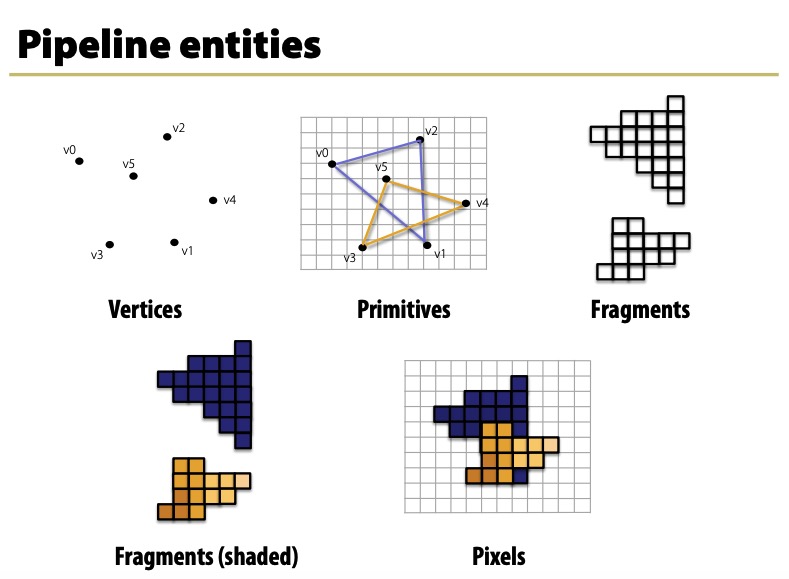从 CPU 出发
- 收集需要渲染的 mesh 信息与资源。(hdd -> ram)
- CPU 将包含数据(shader、texture、material、lighting、transparency 等)的 setPass call 命令并将其放进 commandBuffer。
- CPU 将包含数据(渲染对象)的 draw call 放进 commandBuffer 并发送给 GPU。
到达 GPU
- GPU 收到并按照顺序读取 commandBuffer。
- GPU 根据 set render state 命令更新 render state。
- Gigathread Engine 从 ram 中获取信息并复制到 vram。
- GPU 根据 draw call 命令中的数据按照当前 render state 进行绘制。
- 将每个顶点、像素及相关数据打包成 thread block 分发给 SM 单元。
- SM 单元中的 Polymorph Engine 将顶点数据从 vram 复制到 l1、l2、register。
- SM 单元将 thread block 拆分成更小的 warp 用于调度并发出命令交予 core 执行,接下来就是 pipeline 流程,其中有 core 与 GPU 上的其他单元参与。core 在其中的角色就是对着色器的每一行代码进行执行。

渲染管线


- Vertex Processing:执行 Vertex shader。
- Primitive Assembly:根据图元类型将 Vertex 组合为图元并输出。
- Tessellation Shading:曲面细分。
- Geometry Shading:新增、更改、删除图元。
- Viewport Transform & Clipping & :视口变换,裁剪超出视口的图元。
- Culling & Rasterization:将图元转为输出 fragments,以及 sample coverage(用作 MSAA ) 信息。
- Fragment Processing:执行 Fragment Shader。
- Raster Output:
- frameBuffer blend
- depth test
- antiAliasing
参考


